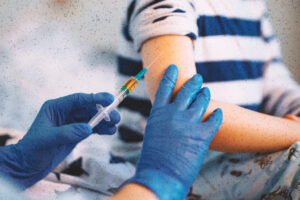Text by Henrylito D. Tacio
(First of Two Parts)
Even before the pandemic changed the world, Cagayan de Oro City-born Paul John Vesagas had already had something been off and different with him.
“For the longest time, I felt a deep sense of sadness that I lost interest in the things I loved doing the most,” admitted Vesagas, who is a health professional taking care of people. “The feeling is so melancholic that I actually had thought that the world was so harsh on me. At the apex of this mood, I felt nothing but an empty space without substance and without meaning. I felt worthless, useless and wasted. I lost focus and direction.”
On top of these, he got episodes of panic attacks. When it happens, “I hyperventilate,” he said. “I had an overwhelming feeling of impending doom or danger, chest tightness and pounding heartbeat.”
The combination of these manifestations went on a daily basis, which he had to endure. “The feeling is very much similar to having an alternate ego or conscience telling you that you have to survive all these,” he said.
Then, it reached to a point that he could no longer bear the daunting task of self-pep talks that he could win over his depressed emotions, his moods. He totally shut from the people around him. He refused to see friends. He used to enjoy coffee times and parties with them. But all these were gone out of the window.
Until a friend noticed his behavioral change and suggested that Vesagas see a psychiatrist. At first, he was hesitant because of the stigma attached to people seeking mental health issues. But he took the first of the many brave steps.
“After a series of therapy sessions, I was diagnosed to have major depressive disorder and panic disorder,” he said.
The Mayo Clinic calls major depressive disorder simply as depression. “(It) is a mood disorder that causes a persistent feeling of sadness and loss of interest,” it says. “It affects how you feel, think and behave and can lead to a variety of emotional and physical problems.”
A few years back, the Geneva-based World Health Organization (WHO) listed 4.5 million depressed people in the Philippines, considered to be “the highest incidence of depression in Southeast Asia.”
Most Filipinos who experience depression are young adults. But the country lacks epidemiological data on depression among these people, according to results from a nationwide cross-sectional survey.
The survey found that about one in 10 Filipino young adults experience moderate to severe depression. “The prevalence of moderate to severe depression in Filipino young adults is higher among females than males,” the survey said.
The finding is true to most people who experience depression. “One in four women is likely to experience an episode of severe depression in her lifetime, with 10-20% lifetime prevalence, compared to 5-10% for men,” the Department of Health (DOH) states.
Meanwhile, many people have just one or two panic attacks in their lifetimes, and the problem goes away. “But if you’ve had recurrent, unexpected panic attacks and spent long periods in constant fear of another attack, you may have a condition called panic disorder,” the Mayo Clinic says.
Panic disorder often begins in the late teens or early adulthood, the US National Institute of Mental Health (NIMH) says. “Women are more likely than men to develop panic disorder,” it adds.
The good news is: panic disorder is treatable. “Panic disorder is generally treated with psychotherapy (sometimes called ‘talk therapy’), medication or both,” NIMH says. “Talk with a health care provider about the best treatment for you.”
Depression, on the other hand, is a different story. The Mayo Clinic says depression should not be taken lightly. As a medical health practitioner, Vesagas knows this. So much so that he went through some therapy sessions with his psychiatrist.
The doctor prescribed Vesagas antidepressants and anti-anxiety to counter the symptoms he was experiencing. “After weeks of treatment, my mood improved and my anxiety was controlled,” he said.
These days, Vesagas still gets episodes every now and then but at least he has the psychosocial support he needs. “With the help of a few close friends, I was able to get through the depression and anxiety,” he said. “I’m not saying that I’m 100% cured, but I know which buttons to press whenever I have episodes.”
Mental illness ranks third among the types of disabilities in the country. The health department reported that one in 5 Filipino adults has some form of mental illness, topped by schizophrenia, depression and anxiety.
In 2012 alone, the WHO regional office reported that there were 2,558 cases of Filipinos committing suicide, averaging to 7 suicide cases per day.
The WHO Global School-Based Health Survey conducted in 2011 has shown that in the Philippines, 16% of students between 13-15 years old have “ever seriously considered attempting suicide” while 13% have “actually attempted suicide one or more times during the past year.”
“Mental health and well-being are a concern of all,” says the health department in a statement, adding that it is addressing concerns related to MNS (mental, neurological and substance use disorders).
The Philippine Health Insurance Corporation recently covered mental illness but limited only to patients with severe mental disorders confined for short duration.
According to a report, there are 46 outpatient mental health facilities available in the country, of which 28% allocate units that are for children and adolescents only. “These facilities treat 124.3 users per 100,000 general population,” it said. “Of all users treated in mental health outpatient facilities 43% are female and 8% of all contacts were children or adolescents.”
“Having a mental health condition is not a joke,” Vesagas stressed. “Surviving one is not an easy task.”
He urged people to stop judging those who have mental health problems. “Stop stereotyping,” he urged. “Normalize mental health. Treat mental illness like physical illness.” (To be concluded)








